CoreLogic’s daily dwelling values index, which measures price changes across the five major capital cities, dived another 0.39% in the week ended 15 September – the 19th consecutive weekly decline:

19th consecutive week of house price declines.
It was a sea of red ink, with every major Australian capital city recording falling dwelling values:
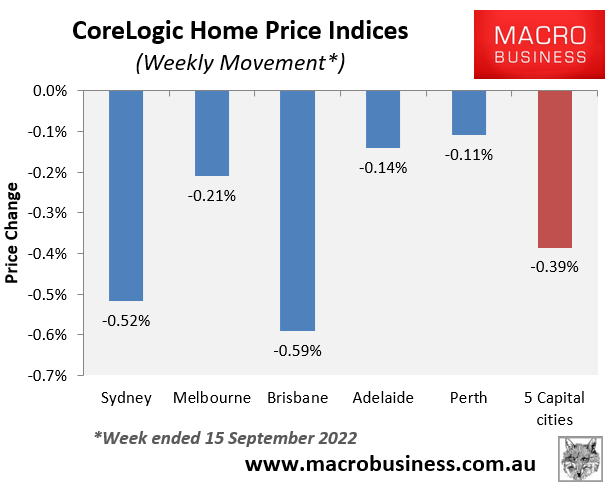
Coast-to-coast house price falls.
So far in August, dwelling values have fallen 0.62% at the 5-City Aggregate level, driven by the three largest East Coast capital cities – Sydney (-0.86%), Melbourne (-0.46%) and Brisbane (-0.87%):
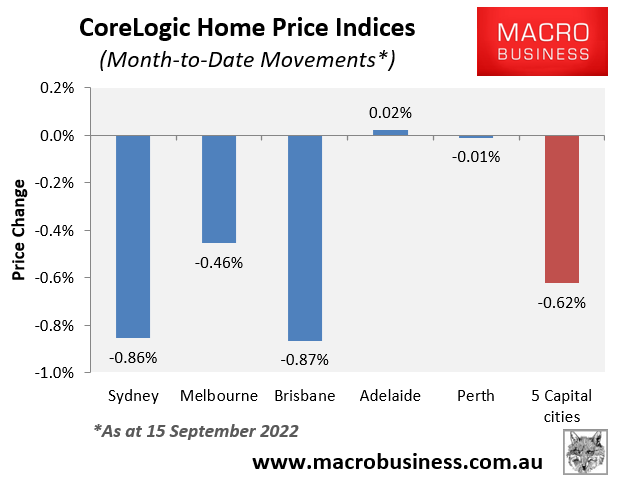
East Coast capitals continue to drive price falls.
The next chart shows that quarterly values have fallen sharply across Sydney (-6.2%), Melbourne (-3.8%), Brisbane (-3.7%), and the 5-City Aggregate level (-4.2%), driven by the Reserve Bank of Australia’s (RBA) aggressive rate hikes:
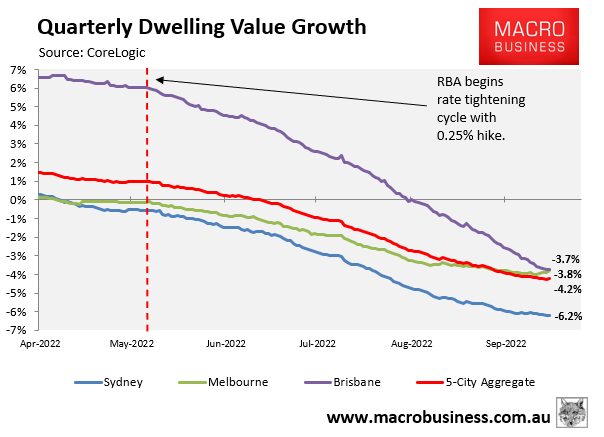
Sharp price falls across Sydney, Melbourne and Brisbane.
Quarterly growth remains positive across Adelaide (1.0%) and Perth (0.1%), but is slowing fast in response to rate hikes:
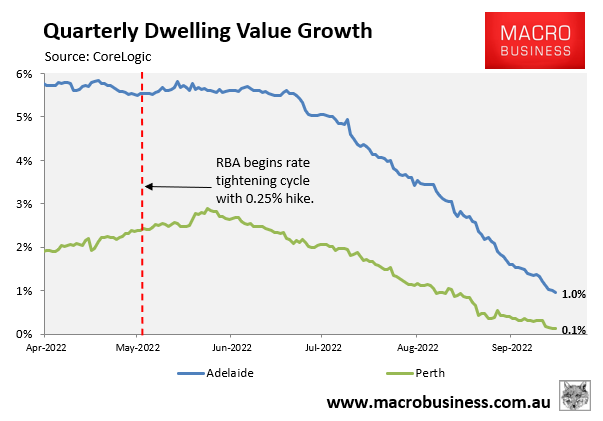
Adelaide and Perth still positive, but growth fading.
Finally, declines from peak are shown in the next chart. As you can see, dwelling values have fallen by 5.0% at the 5-City Aggregate level. Sydney is leading the downturn, with dwelling values down 8.3% from their mid-February peak. Melbourne (-5.1%) and Brisbane (-3.8%) have also suffered solid losses, whereas Adelaide and Perth (both -0.3%) have only recently joined the downturn:
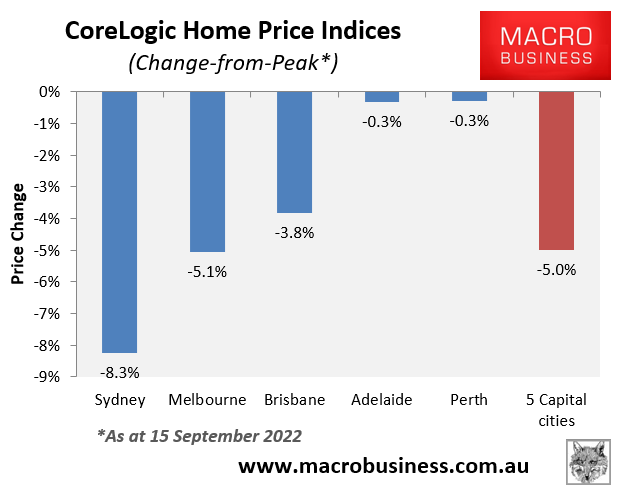
Sydney leads the nation’s housing bust.
The worst is yet to come, with last week’s RBA monetary policy statement noting that “the Board expects to increase interest rates further over the months ahead”.
Given there is a two to three-month lag between interest rate hikes and their impact on mortgage holders, Australian dwelling values will continue to fall hard.
According to CoreLogic records dating back to 1980, Australian capital city dwelling values have never fallen by more than 11%. This record looks certain to be broken over the next six months as the delayed impact of rate hikes, let alone further rises, take effect.

